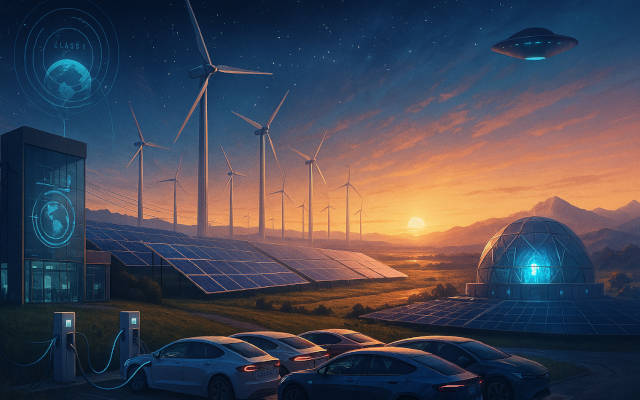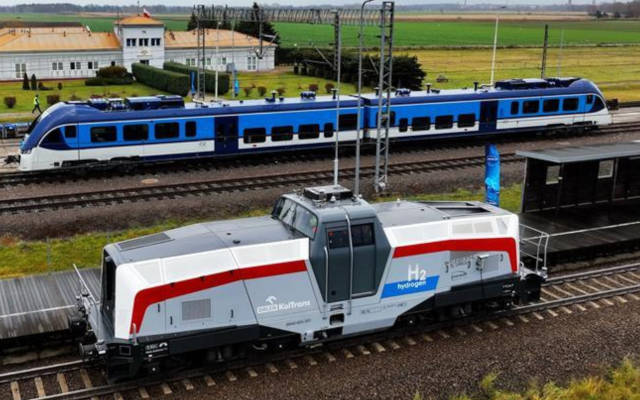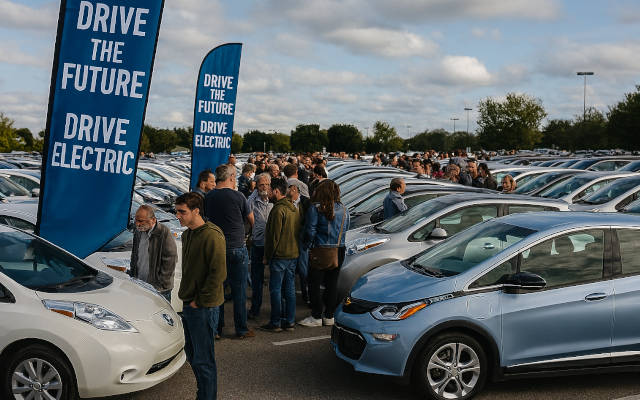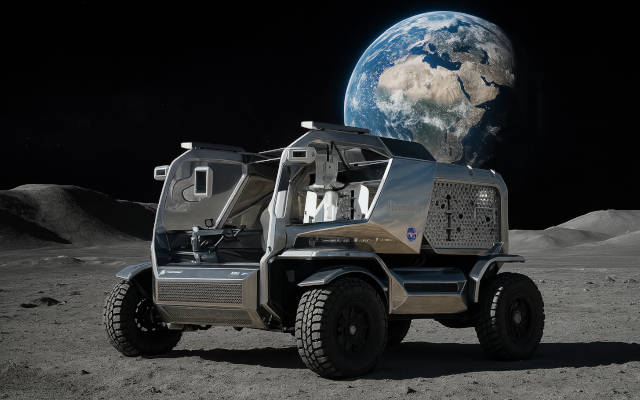 EDITOR'S PICK
EDITOR'S PICK
E1 Lagos Grand Prix: Where Speed Meets Sustainability on the Water
04 Oct 2025 | Synopsis
 The E1 Lagos Grand Prix electrified Africa's waterfront with high-speed, zero-emission RaceBirds reaching over 50 knots. Team AlUla, backed by LeBron James, claimed victory in a dramatic final heat, edging out Team Drogba and Team Miami. Uniform boat specs put pilot skill front and center, while Lagos showcased its commitment to clean marine innovation, making the event a thrilling blend of sport, sustainability, and spectacle.
The E1 Lagos Grand Prix electrified Africa's waterfront with high-speed, zero-emission RaceBirds reaching over 50 knots. Team AlUla, backed by LeBron James, claimed victory in a dramatic final heat, edging out Team Drogba and Team Miami. Uniform boat specs put pilot skill front and center, while Lagos showcased its commitment to clean marine innovation, making the event a thrilling blend of sport, sustainability, and spectacle.Let the Market Lead? Only If It Can See the Horizon
04 Oct 2025 | Synopsis
 The article challenges the WSJ's market-only energy stance, arguing that long-term resilience and sustainability must guide energy policy. It highlights the cost-effectiveness of renewables, the emerging role of EVs in grid stability, and speculative breakthroughs like fusion and UAP propulsion. Drawing from Native American philosophy and the Kardashev Scale, it calls for a seven-generations mindset to build a clean, reliable, and future-ready energy system.
The article challenges the WSJ's market-only energy stance, arguing that long-term resilience and sustainability must guide energy policy. It highlights the cost-effectiveness of renewables, the emerging role of EVs in grid stability, and speculative breakthroughs like fusion and UAP propulsion. Drawing from Native American philosophy and the Kardashev Scale, it calls for a seven-generations mindset to build a clean, reliable, and future-ready energy system.The Hydrogen Illusion: Poland's Fuel Cell Locomotive and the Uneven Future of Clean Rail
04 Oct 2025 | Synopsis
 Poland's hydrogen-powered SM42-6Dn locomotive marks a symbolic step toward clean rail, but hydrogen trains face steep economic and logistical hurdles. Germany's mixed results, including failures in the Taunus region, highlight infrastructure and reliability issues. Battery-electric trains offer higher efficiency and lower costs, while hydrogen remains a niche solution. Poland’s effort is strategic - more rehearsal than revolution - in a broader push for rail decarbonization.
Poland's hydrogen-powered SM42-6Dn locomotive marks a symbolic step toward clean rail, but hydrogen trains face steep economic and logistical hurdles. Germany's mixed results, including failures in the Taunus region, highlight infrastructure and reliability issues. Battery-electric trains offer higher efficiency and lower costs, while hydrogen remains a niche solution. Poland’s effort is strategic - more rehearsal than revolution - in a broader push for rail decarbonization.2026 Will Be The 'Year Of The Used EV,' Analyst Says. Here's Why
04 Oct 2025 | Synopsis
 Used EV prices are nearing parity with gas cars, boosting demand despite the end of federal tax credits. Analysts predict 2026 will be the “year of the used EV,” driven by affordability and a surge in lease returns. In August, used EV sales rose 59% year-over-year. Some models, like the Nissan Leaf and Chevy Bolt, are priced under $15,000. State incentives and lower battery costs continue to support the market.
Used EV prices are nearing parity with gas cars, boosting demand despite the end of federal tax credits. Analysts predict 2026 will be the “year of the used EV,” driven by affordability and a surge in lease returns. In August, used EV sales rose 59% year-over-year. Some models, like the Nissan Leaf and Chevy Bolt, are priced under $15,000. State incentives and lower battery costs continue to support the market.NASA Moon Rover Project Pushes Extreme Battery Tech To Its Limits
03 Oct 2025 | Synopsis
 GM is adapting its EV battery tech for NASA's Lunar Terrain Vehicle, part of Artemis V. Using durable lithium-ion packs with high-nickel NCMA cathodes, the rover will withstand extreme lunar conditions -temperatures from - 173°C to scorching highs - while operating reliably for 10 years. Four steerable wheels with crab-walk and zero-turn features boost mobility, and fault-tolerant design ensures function even if cells fail, extending U.S. exploration on the Moon.
GM is adapting its EV battery tech for NASA's Lunar Terrain Vehicle, part of Artemis V. Using durable lithium-ion packs with high-nickel NCMA cathodes, the rover will withstand extreme lunar conditions -temperatures from - 173°C to scorching highs - while operating reliably for 10 years. Four steerable wheels with crab-walk and zero-turn features boost mobility, and fault-tolerant design ensures function even if cells fail, extending U.S. exploration on the Moon.
 Si Exclusive
Si Exclusive
Hydrogen's Flight Path: Fuel Cells, Turbines, and the Economics of Clean Aviation
10 Oct 2025 |  Aviation is shifting from Jet A to four fuel systems: electricity, hydrogen (fuel cell and combustion), SAF, and petroleum. Fuel cells suit short-haul aircraft; hydrogen combustion may power long-range jets. SAF bridges legacy fleets. Hydrogen costs - $5-$7/kg today, possibly $2/kg by 2040 - impact ticket prices and infrastructure decisions. Airport authorities, airlines, and governments will share deployment costs. Each fuel has distinct environmental pros and cons shaping aviation's net-zero future.
Aviation is shifting from Jet A to four fuel systems: electricity, hydrogen (fuel cell and combustion), SAF, and petroleum. Fuel cells suit short-haul aircraft; hydrogen combustion may power long-range jets. SAF bridges legacy fleets. Hydrogen costs - $5-$7/kg today, possibly $2/kg by 2040 - impact ticket prices and infrastructure decisions. Airport authorities, airlines, and governments will share deployment costs. Each fuel has distinct environmental pros and cons shaping aviation's net-zero future.
 10 Oct 2025 23:49:32 UTC |
RECENT PODCASTS
BYD Soars - Cheaper Tesla Models - The Bolt is Back - Rivian
SEARCH RSSTREAM
 53 New Postings In Past 24 Hours
53 New Postings In Past 24 Hours
Category:finance
Region:NoAmerica
Date:10 Oct 2025
Category:policy
Region:NoAmerica
Date:10 Oct 2025
Category:mobility
Region:AsiaPacific
Date:10 Oct 2025
Category:mobility
Region:AsiaPacific
Date:10 Oct 2025
Category:finance
Region:NoAmerica
Date:10 Oct 2025
Category:finance
Region:IndoAsia
Date:10 Oct 2025
Category:energy
Region:Global
Date:10 Oct 2025
Category:energy
Region:NoAmerica
Date:10 Oct 2025
Category:finance
Region:NoAmerica
Date:10 Oct 2025
Category:finance
Region:Global
Date:10 Oct 2025